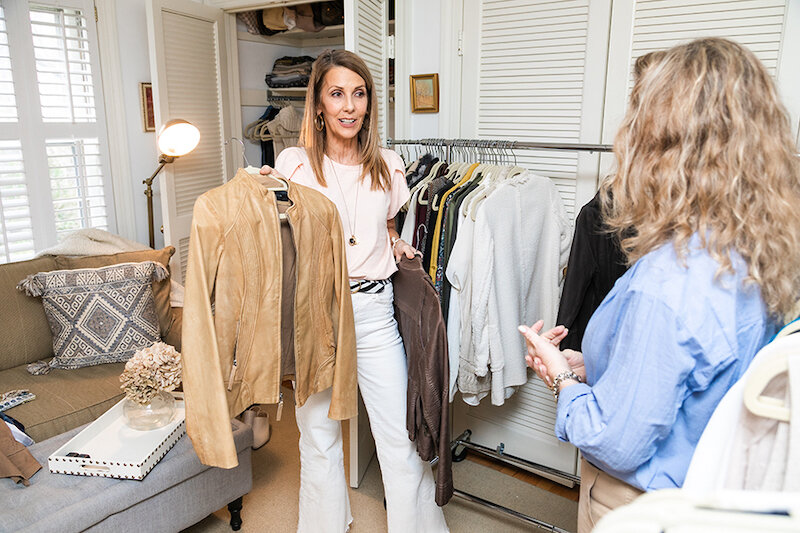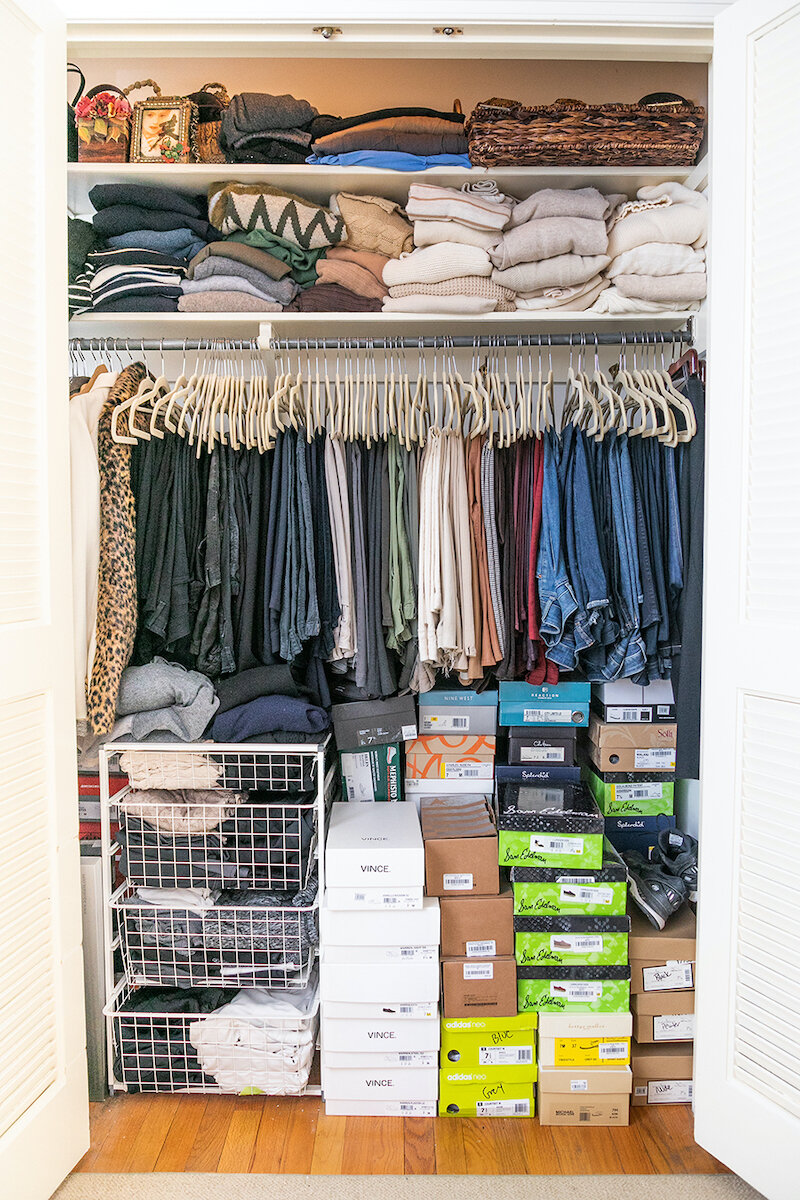A Mini Edit Methodology
I've tapped into a new sweet spot with my business that is directly related to the pandemic. People have spent a lot of time at home with their stuff. All the stuff has started to represent the things that have to be managed, which in turn represents time. For many people, this triggers a feeling of anxiety because there's an action item that needs to occur, but they don't always know how to "eat an elephant." Volume can be paralyzing. I know this because I can't stand in front of a group of greeting cards without having to pee. Strange but true and perhaps TMI. My point is that we all have triggers and physical reactions to certain decisions. These are the times we could use a mini lifeline. I offer a scheduled free 15-minute phone conversation as a way for potential clients to identify their hurdles and present the scope of the project. These initial phone conversations often have a thread of the phrase, "It's time," and more often than not, I'm not the one laying this down. Identifying the problem is the first step.  Many Stylebook readers might recognize Juliet Bluestein from pre-COVID visits to The Hive. Others know her as a dear friend. I had the pleasure of meeting Juliet through another client many years ago when I interviewed her and subsequently hired her for a sales position at Hysteria. Over those years, Juliet would occasionally mention how one day she was going to have me come clean out her closet. Well, that day occurred in March of this year when Juliet said, "It's time!" And in hindsight, timing could not have been better for Juliet. I believe she recorded 25 bags of donated items that she unloaded before everything shut down days later. Under the circumstances, a swift donation was most effective over piece-meal "consign or donate" decisions, which can keep you tied to this process longer than psychologically necessary. Releasing from items that hold memories such as clothing is mentally draining. It can be helpful to create a metaphorical "carrot" for large projects. The silver lining for this particular purge was a major closet renovation.
Many Stylebook readers might recognize Juliet Bluestein from pre-COVID visits to The Hive. Others know her as a dear friend. I had the pleasure of meeting Juliet through another client many years ago when I interviewed her and subsequently hired her for a sales position at Hysteria. Over those years, Juliet would occasionally mention how one day she was going to have me come clean out her closet. Well, that day occurred in March of this year when Juliet said, "It's time!" And in hindsight, timing could not have been better for Juliet. I believe she recorded 25 bags of donated items that she unloaded before everything shut down days later. Under the circumstances, a swift donation was most effective over piece-meal "consign or donate" decisions, which can keep you tied to this process longer than psychologically necessary. Releasing from items that hold memories such as clothing is mentally draining. It can be helpful to create a metaphorical "carrot" for large projects. The silver lining for this particular purge was a major closet renovation.
 Juliet's "Before" Closet Photos
Juliet's "Before" Closet Photos
 Juliet's "Before" Closet Photos
Juliet's "Before" Closet Photos
 Juliet's "Before" Closet Photos
Juliet's "Before" Closet Photos
Fast forward to last week (over six months later) when a long-awaited second appointment occurred. Juliet booked a five-hour Outfit Creation. This is an appointment that can be broken up into two sessions or one. Juliet knows her style through and through but acknowledges the value of a fresh pair of eyes on her usual suspects. First off, the closet reno was stunning. Everything has a place that makes sense and there are no more dark shadows cast over her clothing. I'm not one to mess with perfection, but I asked to introduce one final methodology to this effort. I encouraged Juliet to drill down and identify seasonal effectiveness within her overall wardrobe. With my help, we separated pieces that she will introduce later in the season. This can be accomplished with an annex closet or zip-up wardrobe bags, but it's important that you are not looking at those pieces in conjunction with what is "active!" 


Here's the Why:
I've gone on record that analysis paralysis plays out when there are too many decisions in front of you. This might pertain to you if you look at the group of items that hang in your closet and think, "I have nothing to wear today." Many organizers apply the philosophy that you should have everything in plain view to know what you have. This is true, but we also start to dismiss what we aren't using. Once items have been repeatedly dismissed, a pattern develops. Tainted by a pattern, there's a sense that we have nothing and want to satisfy a need for excitement that no longer exists. One of my clients has equated this to kids and toys - which I love, and she's spot on with the analogy. Let's face it; we have become a society with a need to satisfy our need for new. Getting packages in the mail has been equated to feeling like we've received a gift - even if we're the one who's paid for those deliveries. Explore this phenomenon further and scientists would agree that this is a simple brain function. I may not have a degree in neuroscience, but I've studied shopping behavior long enough to recognize the cause and effect relationship at play. Implementing a small shift in your wardrobe every month keeps you in touch with your pieces and thoughtful about when they are most useful throughout the season. Some of my most skeptical clients agree that they are excited to get new pieces out every month. In theory, one would be doing a swap - five items in and five items out. This practice engages you to think about what you have on a regular basis and will improve your ability to shop with a purpose. Step one is always identifying the behavior.
 Juliet's "After" Closet Photos
Juliet's "After" Closet Photos
 Juliet's "After" Closet Photos
Juliet's "After" Closet Photos
I hope to workshop this methodology over January or February. I will post it here on Stylebook if it takes formation. In the meantime, I'm helping women create exciting moments of rediscovery in their COVID wardrobes and discerning the stale from the untapped potential. Whether you find value in a new pair of eyes on your closet or not, I encourage you to try the simple monthly refresh this winter and reengage with what once sparked energy because I really think I'm on to something!

